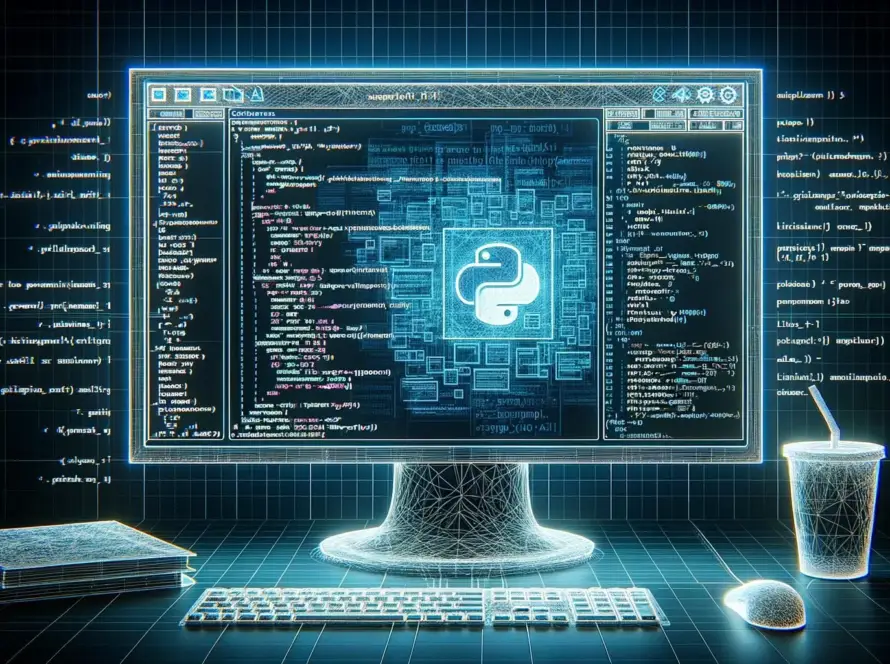Generated by Contentify AI
- Introduction
- Getting Started with Python
- Basic Python Syntax
- Variables and Data Types in Python
- Control Flow and Loops in Python
- Conclusion

Introduction
Python programming is a versatile and beginner-friendly language that is widely used in various fields, such as web development, data science, and automation. Whether you are new to coding or looking to expand your skills, learning Python can be a rewarding experience. In this guide, we will explore the fundamentals of Python programming, from basic syntax to control flow and loops. By the end of this guide, you will have a solid understanding of Python and be ready to start creating your own programs.
Getting Started with Python
To embark on your Python programming journey, the first step is to get acquainted with the language and its environment. Python is known for its simplicity and readability, making it an excellent choice for beginners. To get started, you will need to install Python on your computer. Python is available for all major operating systems and can be downloaded from the official Python website. Once installed, you can start writing and executing Python code using an Integrated Development Environment (IDE) such as PyCharm, or a text editor like Visual Studio Code. As you delve into the world of Python programming, remember to practice regularly and experiment with different code snippets to reinforce your learning.
Basic Python Syntax
Basic Python Syntax
When delving into Python programming, understanding the basic syntax is crucial. Python syntax is known for its readability and simplicity, making it an ideal language for beginners. Each line of code in Python typically ends with a newline character, and the use of indentation is significant for structuring the code. Python uses colons and indentation to define code blocks, such as loops and functions. Furthermore, Python is a dynamically typed language, meaning you don’t need to declare variable types explicitly. Instead, Python infers the variable type based on the assigned value. By mastering the basic syntax of Python, you lay a solid foundation for creating efficient and clean code.
Variables and Data Types in Python
Variables and Data Types in Python
In Python programming, variables are used to store data values that can be manipulated or accessed within a program. Python is a dynamically typed language, allowing variables to be assigned without specifying a data type explicitly. Common data types in Python include integers, floats, strings, lists, tuples, dictionaries, and sets. Understanding the nuances of each data type is essential for effective programming. Additionally, Python provides flexibility in variable naming conventions, allowing for descriptive and meaningful variable names. By mastering variables and data types in Python, beginners can efficiently manage and manipulate data within their programs, paving the way for creating more complex and functional applications.
Control Flow and Loops in Python
Control Flow and Loops in Python
In the world of Python programming, mastering control flow and loops is essential for creating efficient and functional code. Control flow structures, such as if statements and loops, allow programmers to dictate the flow of their programs based on certain conditions. In Python, the if statement is used to execute a block of code only if a specified condition is true. Additionally, Python provides various types of loops, including for loops and while loops, to iterate over sequences of data or execute code repeatedly. Understanding how to utilize control flow structures and loops effectively enables beginners to build dynamic and interactive programs. By incorporating these concepts into their Python projects, aspiring programmers can enhance the functionality and logic of their code, ultimately advancing their skills in Python development.
Conclusion
After familiarizing yourself with the basic syntax of Python, the next step is to delve into variables and data types. In Python programming, variables serve as containers for storing data values. Python’s dynamic typing feature allows variables to be assigned without explicitly declaring a data type. Common data types in Python include integers, floats, strings, lists, tuples, dictionaries, and sets. Understanding these data types is fundamental for efficient programming. Additionally, Python offers flexibility in naming variables, encouraging descriptive and meaningful names. By mastering variables and data types in Python, beginners can effectively manage and manipulate data within their programs, laying a strong foundation for creating intricate and functional applications.






